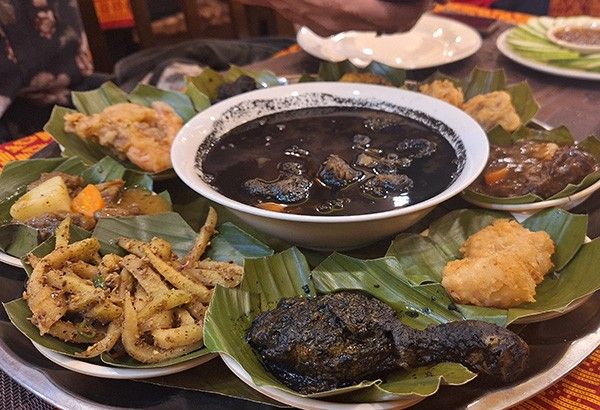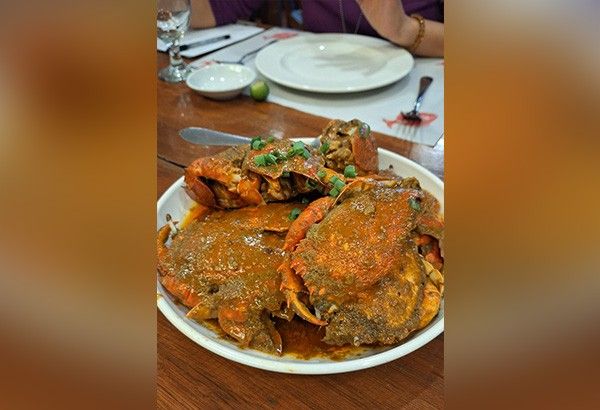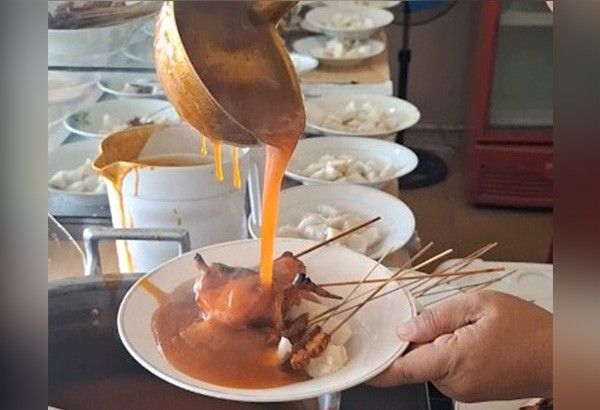Feast on a plate: What to eat for a festive food trip in Zamboanga City

ZAMBOANGA CITY, Philippines — While many in other parts of the country enjoy their Silogs (fried rice with egg and choice meat) in the morning, in this part of the Philippines, there is a preference for Satti, a meal composed of skewered bite-sized meat drenched in spicy deep orange sauce that comes with puso or rice wrapped in woven coconut leaves.
It is quite a heavy — and kicking — start for the day. Memories of asking the younger sibling to drive downtown just to buy Satti, especially on a weekend morning, lingers even years of living in Manila.
Latal, sample dishes in one plate
Lunch could be a plate of Latal, a sampler of some Southern Mindanao or Tausug dishes.
Many people have probably heard of Tiyula Itum, Beef Kulma or Chicken Piyanggang as dishes from this region. Tiyula Itum is a beef stew, while Chicken Pyanggang is chicken curry. Their flavors are elevated with a smoky hint by the burnt coconut meat incorporated in them. Beef Kulma, on the other hand, is a beef curry dish cooked in coconut milk and aromatics.
Imagine all these are featured in a plate, which is offered in dining establishments in the city. Bay Tal Mal in SM MindPro restaurant serves Latal for one. The restaurant also serves Sulu coffee, which is not for the faint of heart.
Knickerbocker, the 'fresher' version of Halo-Halo
Come merienda, there is that desire to drive to Palmeras or Paseo del Mar just to get a glass of Knickerbocker, which some would claim as the "healthier" version of Halo-Halo. It is simply because instead of beans, kaong, langka, and other preserved fruits, Knickerbocker's recipe makes use of fresh fruits, such as watermelon, mango and banana, and gulaman. It is topped with usually strawberry ice cream, giving it its distinct pink hue.
Unlike the Satti, though, Knickerbocker is a relatively new introduction somehow more than a decade ago. It wasn't in this writer's memory while growing up in the southern city as a high schooler in the late 1990s.
These days, a glass is best enjoyed by locals while hanging out in Paseo del Mar, a waterfront that features a food strip, a center stage and shops. It is a few steps away from the popular destination Fort Pillar, and it has a beautiful sunset view.
Curacha and Alavar Sauce
And of course, the Curacha will always be associated with Zamboanga City. It is a larger looking crab compared to the regular crab. It is actually a spanner crab that is distinguished for its wider carapace, giving it its meatier heft.
The popular Alavar restaurant is best known for cooking the Curacha with its equally famous Alavar sauce. Over the years, the sauce has become a favorite pasalubong for Zamboanguenos and even visitors. It can be used like a flavoring for other seafood dishes such as for sauteeing shrimps or buttered crabs, and even vegetables for added umami.



Bagon Gata
Alavar also offers its version of shrimp paste or bagoong. Its version is different from other bagoongs in the country as it uses coconut milk, giving it its sweet, creamy flavor.
It is the Zamboanga way of Bagoong or Bagon Gata by simmering the salt-cured shrimp in coconut milk. There are recipes that add tomatoes, as this writer recalled a beloved neighborhood granny who gave a sampling of her Bagon Gata after her grandchildren, who are friends with this writer to this day, helped her harvest tomatoes from her little farm.
The flavors of the South, in this case Zamboanga City, is noticeably leaning toward spicy with lots of umami. It can be a lot for the relatively milder taste profiles of other regions, save for the Bicol region, known for their love of chilis.
When one is in the South, it is best to eat what locals eat. It's a whole new world of flavors inside the palate, and it truly enhances one's travel memories through food.
RELATED: WATCH: How to make Pyanggang Manok, Mindanao's delicious 'burnt' chicken dish




















